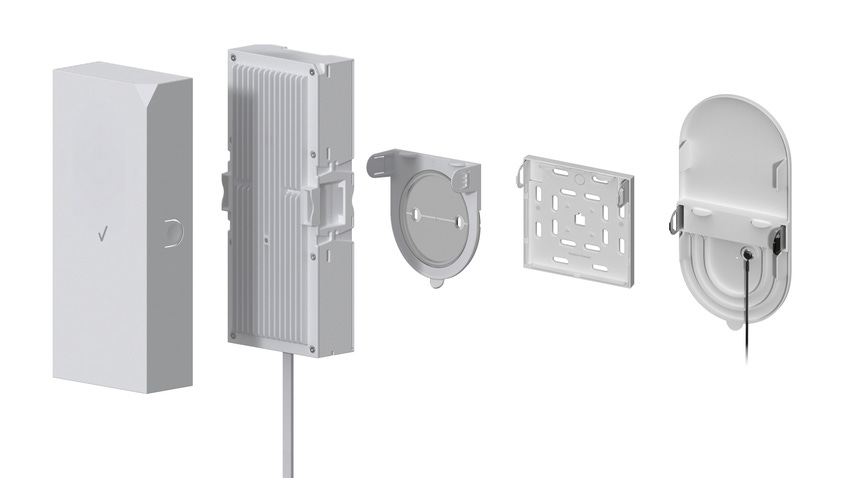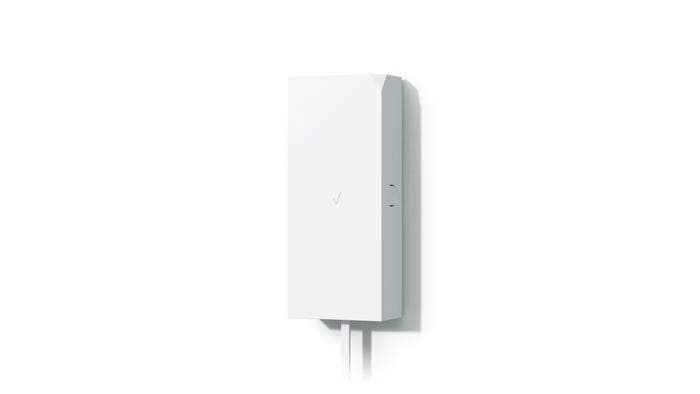How to Design a Better Home Internet Receiver
An engineering team developed a receiver that users could install themselves on most inside or outside home surfaces.
December 7, 2023

Intelligent Product Solutions (IPS) was tapped to help design the Verizon Receiver to provide fast 5G Internet to every home within a coverage area. IPS delivered a receiver design that can be installed on windows, walls, or railings, indoors or outdoors. The system, which also features a self-orienting 5G antenna, reversible cover, and discrete mounting brackets, earned a Red Dot design award.
“Receiving a Red Dot Award is a great honor and recognition of the superior product design work we deliver to our clients,” said Paul Severino, president of Intelligent Product Solutions, in a news release. “This design effort on the Verizon Receiver was a truly collaborative effort with Verizon and Aruliden.”
Design News reached out to Anthony Camarda, mechanical engineer II for IPS, to learn more about the design.

How does the design and engineering of a home Internet receiver impact its functionality?
Camarda: The design and engineering of a home Internet receiver is all about achieving the best possible connection to the towers available in a given area. Producing a receiver that has the flexibility to be mounted in more locations and in ways that are simple enough for an average customer to set up will optimize its performance and the user experience alike.
How did IPS and its partners build a better receiver?
Camarda: IPS worked with Verizon and their partners to develop a receiver that is able to mount to most surfaces a customer would find in (or outside) their home. We achieved this by designing versatile mounting brackets that are simple enough for an average customer to install by themselves. The self-orienting antenna enables an effective self-setup process, where the antenna will align itself to the optimal tower within its adjustment range as opposed to the customer needing to make micro-adjustments for optimal performance. We managed to package this technology into a relatively small weatherproof enclosure that addresses the usual thermal and RF challenges we come to expect from high-performing devices such as this.
How is its design able to support flexible installation?
Camarda: The main body of the receiver can accept a variety of discreet mounting brackets. Each of these brackets facilitate the mounting of the unit to a different surface such as a window, wall, railing, etc. The unit was also designed to be weatherproof for installation outdoors if a strong indoor signal is not possible based on the coverage in a given area or due to the limitations of the building. The self-orienting antenna allows the body and brackets to be more simple and low profile, making a self-install easier and more effective for a customer. These features combine to give the customer the flexibility to install the unit wherever signal strength is best in or around their home.
What other design features standout from other receivers?
Camarda: The small form factor as well as its simple, monolithic form allow the receiver to blend into a customer’s living space. This gives further freedoms for a customer to place a receiver wherever signal strength is best, as opposed to placing it where it may be hidden if it were a less visually appealing form.

The Verizon Receiver. Credits: Manufacturer: Verizon, Basking Ridge, NJ; In-house design: Andrew Toth, Jonathan Simmons Design: Aruliden (Caleb Jones, Reid Schlegel), New York; IPS – Intelligent Product Solutions, Anthony Camarda, Hauppauge, NY
About the Author(s)
You May Also Like





